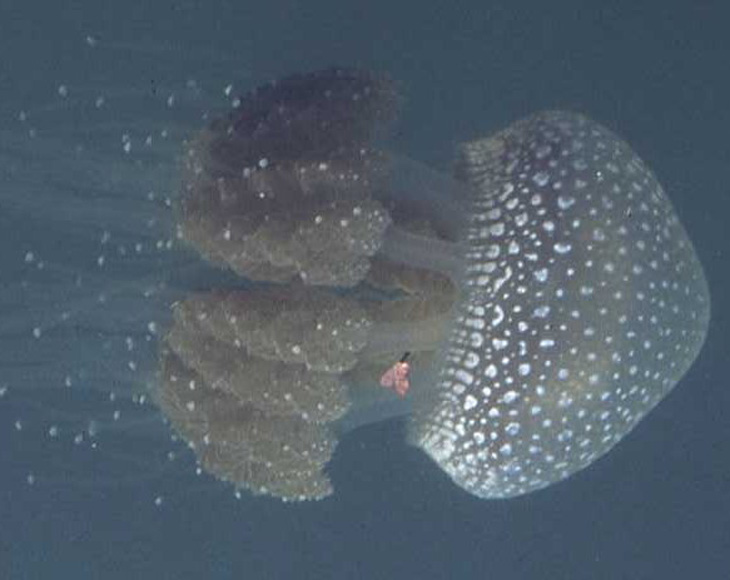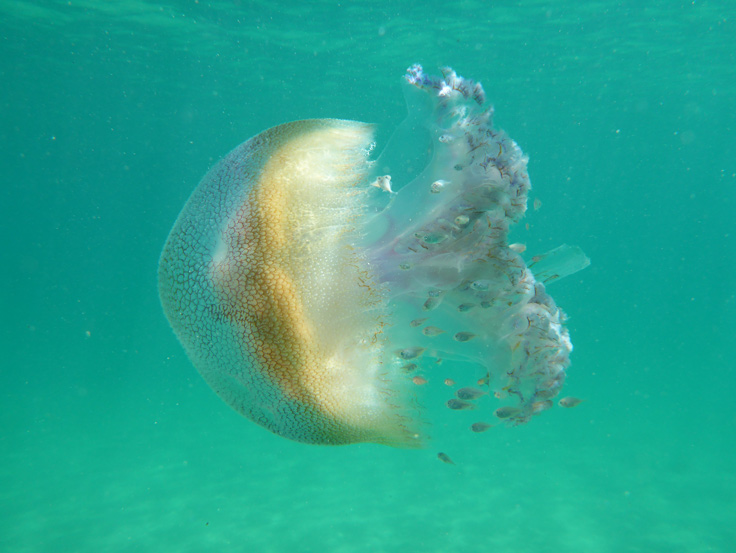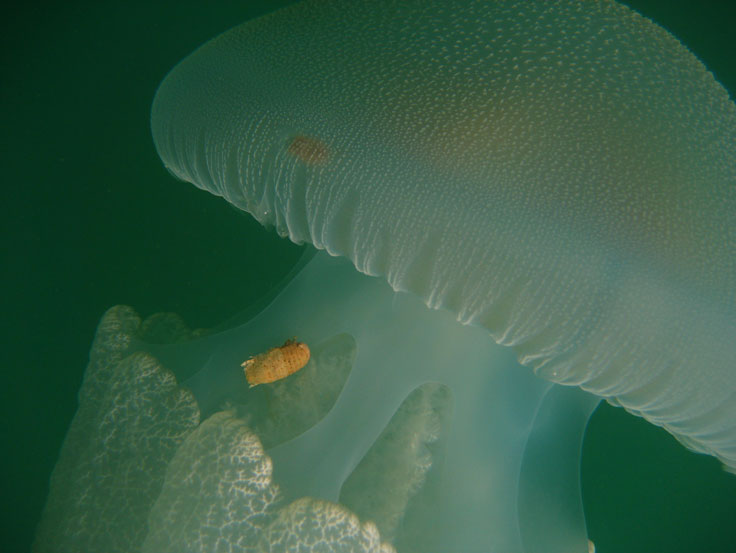Sea jellies are often accompanied by many other animals as they swim through the ocean including juvenile fish, brittle stars, sea anemones, crabs and other crustaceans. Juvenile fish may seek protection from predators by swimming among the tentacles of sea jellies. The brittle stars and sea anemones may be ‘hitching a ride’ to a new location and may steal food from their host sea jelly. Some crustaceans, such as amphipods, are parasites that lay their eggs and rear their young within the tissues of sea jellies. By providing a home to such animals, sea jellies help to support biodiversity in the ocean.
Like corals, some species of sea jelly harbour microscopic plant cells (microalgae called ‘zooxanthellae’) in their tissues – so they are part plant and part animal. Like all plants, the zooxanthellae use carbon dioxide, water and the sun’s energy to produce sugars and oxygen (through the process of photosynthesis). Some of the sugars they produce are transferred to the host sea jelly, which use them as food. Zooxanthellae are golden brown, so sea jellies with zooxanthellae also tend to be coloured brown.
 The Spotted jellyfish, Phyllorhiza punctata harbours symbiotic microalgae (zooxanthellae) in its tissues. Credit, Kylie Pitt
The Spotted jellyfish, Phyllorhiza punctata harbours symbiotic microalgae (zooxanthellae) in its tissues. Credit, Kylie Pitt Juvenile fish swimming with the sea jelly Pseudorhiza haeckeli. Credit, James Brook
Juvenile fish swimming with the sea jelly Pseudorhiza haeckeli. Credit, James Brook
 Isopod Cymodoce gaimardii on the common blubber jelly, Catostylus mosaicus. Credit, Joanna Brown.
Isopod Cymodoce gaimardii on the common blubber jelly, Catostylus mosaicus. Credit, Joanna Brown.